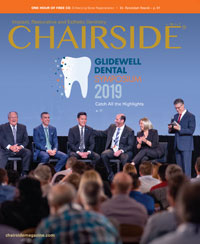An Inside Look at Implant Dentistry’s Essential Textbook
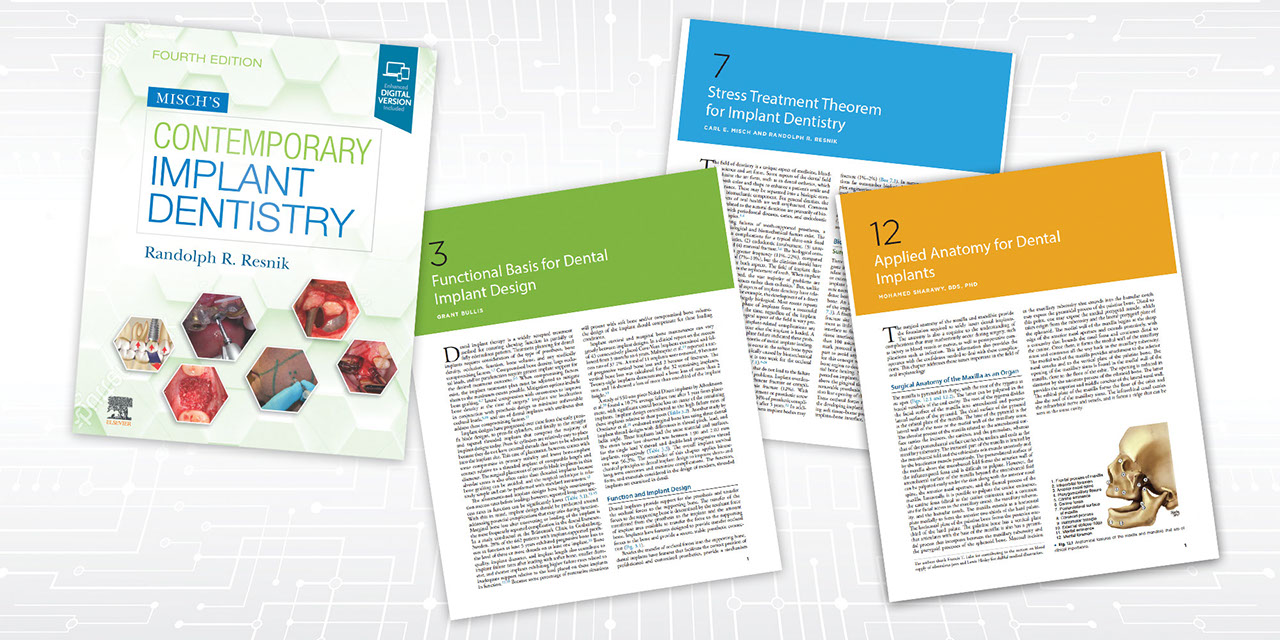
Note: The Hahn Tapered Implant System is now known as the Glidewell HT Implant System
First released in 1993, “Contemporary Implant Dentistry” has become the standard textbook in implant education and one of the best-selling textbooks in the history of dentistry. With the recent arrival of the long-awaited fourth edition of the textbook, we sat down with its primary author, Dr. Randolph Resnik, to discuss the new content clinicians can expect, the rise of implant dentistry in the general practice, and how the book carries on the legacy of the late Dr. Carl Misch.
CHAIRSIDE® MAGAZINE: Can you talk about the very first edition of “Contemporary Implant Dentistry” and what implantology was like back in 1993?
DR. RANDOLPH RESNIK: In the early days of implantology, back in the 1980s and 1990s, there were almost no textbooks, no real accepted protocols in the profession. The first edition of “Contemporary Implant Dentistry” took almost five years to complete and was based on the early, pioneering principles and classifications of Dr. Carl Misch. When this book was first published, it was the only implant textbook that encompassed a comprehensive overview of the surgical, prosthetic and maintenance phases of implant dentistry. This book was considered the complete “encyclopedia” of all aspects of dental implant treatment.
CM: How would you describe the major differences between the new, fourth edition of “Contemporary Implant Dentistry” and the third edition of the book?
RR: The fourth edition has been updated to include the most recent science-based surgical concepts and procedures. All chapters have been extensively updated, and there are over 20 completely new chapters. There is now a total of 42 chapters, with over 1,300 pages and 2,700 detailed clinical images and illustrations.
CM: How do you think “Contemporary Implant Dentistry” has affected implantology at large?
RR: This book has had a significant impact on the profession. From an academic standpoint, most universities and residency programs still use this book as their sole textbook to teach implantology, and clinicians use it as their guide to protocols and techniques. Most concepts of modern-day implant dentistry are based on the principles and techniques contained in this book. “Contemporary Implant Dentistry” as well as our more recent book, “Avoiding Complications in Oral Implantology,” are solely based on current literature and research. Therefore, the reader is educated on the most up-to-date information available based on accepted science.
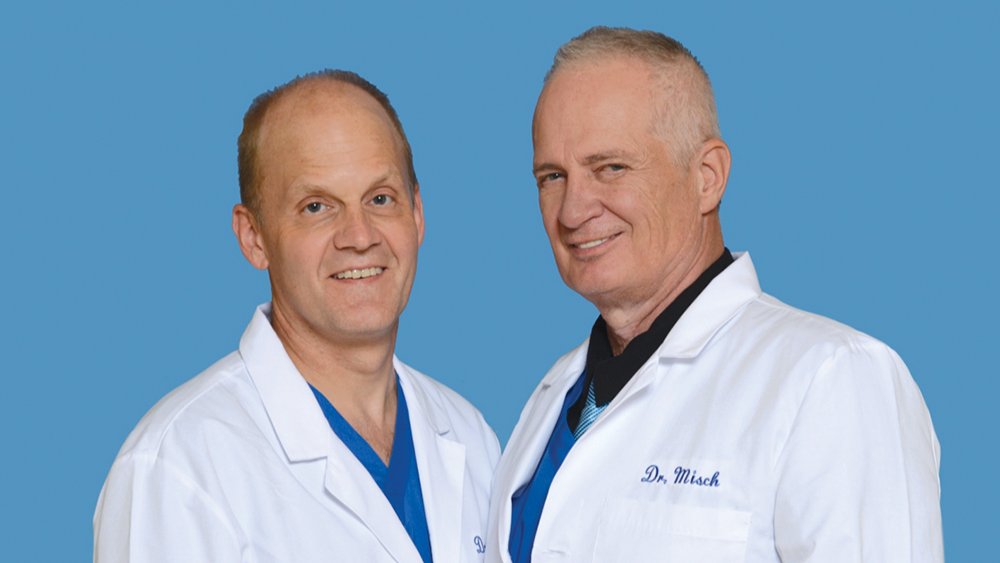
In the late ’80s, Dr. Carl Misch (right) developed the principles and classifications that served as the foundation of “Contemporary Implant Dentistry.” Drs. Misch and Randolph Resnik went on to develop several essential textbooks on oral implantology, and Dr. Resnik carries on that legacy with new editions and textbooks that capture the latest research, techniques and protocols.
CM: What do you think are some of the biggest developments and changes in the field of implantology since the previous edition of “Contemporary Implant Dentistry” was released?
RR: Almost every aspect of implant dentistry has changed since 2007. There have been dramatic advancements in technology that have made the techniques more predictable and successful. First, if you look at preoperative evaluation, with the recent integration of CBCT scanning and software programs used for diagnosis, interactive treatment planning and guided surgery — this has allowed clinicians to practice with the highest degree of accuracy and precision.
Prosthetically, with Glidewell being at the forefront of new research & development, the restorative phase of implant dentistry has become so much more predictable with respect to esthetics and function. The restorative materials and techniques available today are far superior to what we had in the early days of implant dentistry. As for the maintenance phase of implant dentistry, we now have accepted protocols to treat peri-implant disease predictably. So, basically all facets of implant dentistry have changed dramatically.
CM: What changes in the book have been made with regard to the surgical placement of implants?
RR: First, we have added a new chapter on basic surgical protocols and armamentarium. This chapter encompasses all phases of implant surgery, including incision design, flap reflection, modification of bone, tissue manipulation, and suturing techniques. This new chapter also features a comprehensive overview and discussion of various options for surgical instrumentation.
As for the surgical placement of implants, a new chapter was written mainly because of research & development and advancements like the Hahn™ Tapered Implant System (Glidewell Direct; Irvine, Calif.). Because of this surgical system, we now have various predictable surgical protocols specific to the location and bone density present in the implant site. Secondly, because of the design of these implants, we have added new chapters to discuss accepted protocols with immediate placement and immediate load protocols.
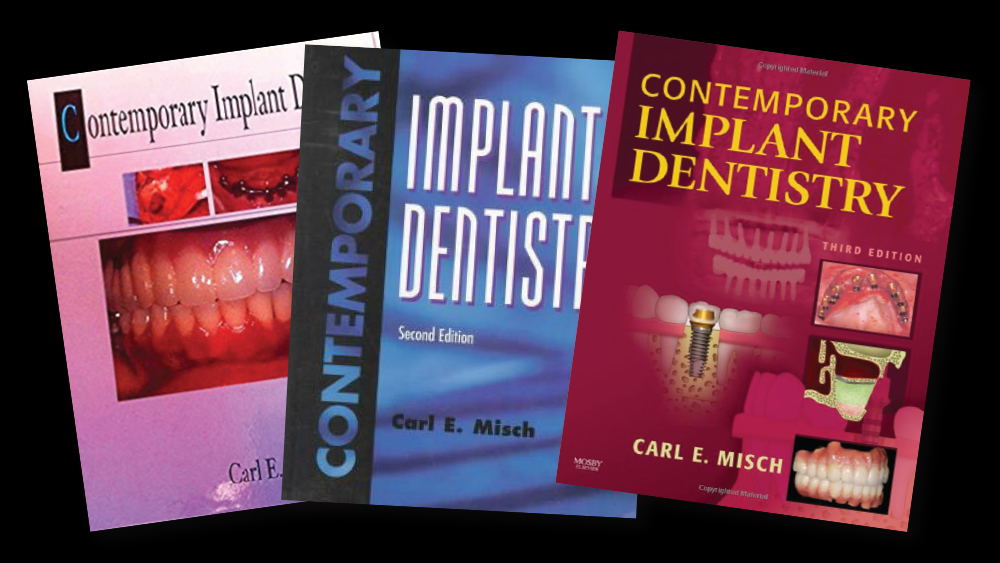
Since the release of the first edition of “Contemporary Implant Dentistry” in 1993, the textbook has continually shaped the field of implant dentistry by standardizing procedures based on the latest research-based principles.
CM: Have there been any changes made to the bone grafting protocols in the new book?
RR: Yes. Because of advancements and research in this field, I have added completely new chapters on atraumatic extraction and socket grafting, guided bone regeneration techniques, and intraoral and extraoral autogenous block grafting. In addition, I have included a dedicated chapter on regenerative materials, specifically an overview with recommendations on the types of bone and membranes to be used with these procedures.
CM: We know the prevalence of peri-implant disease is increasing. Have you made any changes concerning this subject?
RR: Peri-implant disease is a significant issue and a commonly discussed topic in our field. I have added two chapters written by world-renowned periodontist Dr. Jon Suzuki on the treatment of peri-implant disease and maintenance protocols to decrease the complications and morbidity of implants. These accepted protocols, which include a new detoxification and bone grafting technique, contain very valuable information for all clinicians
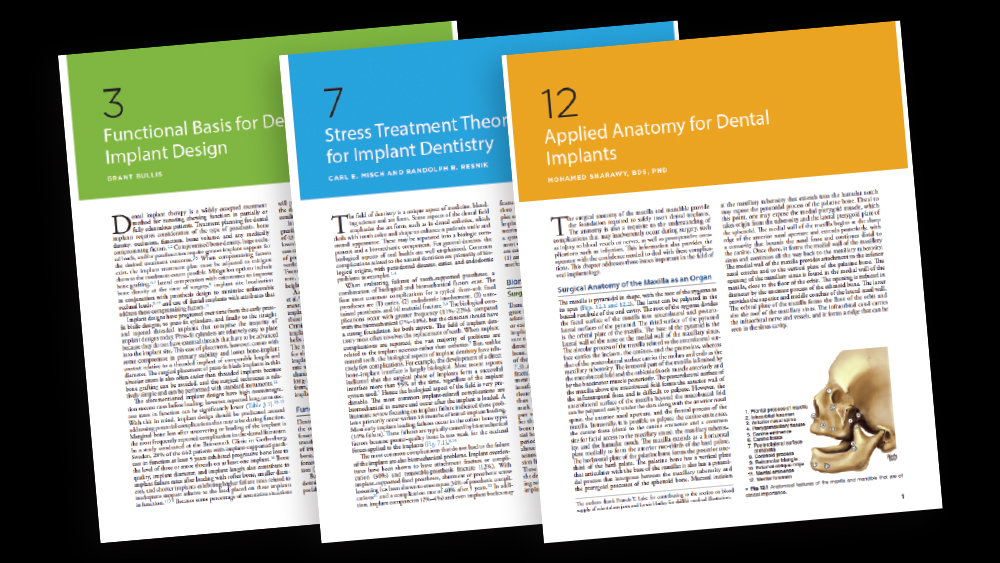
The fourth edition of “Contemporary Implant Dentistry” has been updated with the very latest in science-based surgical and restorative concepts, including 20 completely new chapters covering the latest developments in implantology.
CM: Are there any other new chapters that represent the cutting edge of implant dentistry?
RR: There is a new chapter on Botox® (Allergan; Madison, N.J.) and dermal fillers. When researching new topics for this book, I was amazed at the minimal amount of literature pertaining to these subjects. Therefore, we have included a very detailed chapter describing the use of Botox and dermal fillers in the field of oral implantology. This chapter includes step-by-step pictorial protocols on the various uses of these materials.
CM: Implant treatment has certainly become more widely adopted since the last edition of this book was released, especially in the general practice. Have you made any changes to the book as a result?
RR: This is our 36th year at the Misch International Implant Institute, and in the early days, most of the attendees at our courses were specialists — oral surgeons, periodontists and prosthodontists. Now, 95% of the clinicians taking our courses are general dentists. So we’ve definitely tailored a lot of the book to the situations, indications, procedures and techniques most relevant to the general practice. However, I view the book as a comprehensive resource for all clinicians treating patients, regardless of their experience level. Dr. Gordon Christensen reviewed the book, and I think he said it the best way: “‘Contemporary Implant Dentistry’ is highly recommended as an up-to-date resource for all clinicians which is based on the highest levels of scientific evidence and research. It utilizes current academic and clinical standards which is a one-stop reference for dental students, general practitioners and specialists who wish to update their knowledge on all aspects of surgical oral implantology.”
Dr. Gordon Christensen reviewed the book, and I think he said it the best way: “‘Contemporary Implant Dentistry’ is highly recommended as an up-to-date resource for all clinicians which is based on the highest levels of scientific evidence and research. It utilizes current academic and clinical standards which is a one-stop reference for dental students, general practitioners and specialists who wish to update their knowledge on all aspects of surgical oral implantology.”
CM: Where can dentists find this wonderful new book?
RR: The fourth edition of “Contemporary Implant Dentistry” is available at Amazon or Elsevier’s website.
CM: And finally, can you speak to how this book continues to embody Dr. Misch’s legacy and his philosophy to make research-based principles the standard in implant dentistry?
RR: After Carl became ill, he and I sat down and discussed how to best move forward with the Misch Institute and his legacy. His goal always was to continually elevate the standard of care in implant dentistry. Carl commonly used the quote, “Share what you have learned.” Therefore, I have dedicated this book to Carl, to share what we have learned as well as continue to learn. I believe this book will carry on his legacy and help implant dentistry reach the next level.

